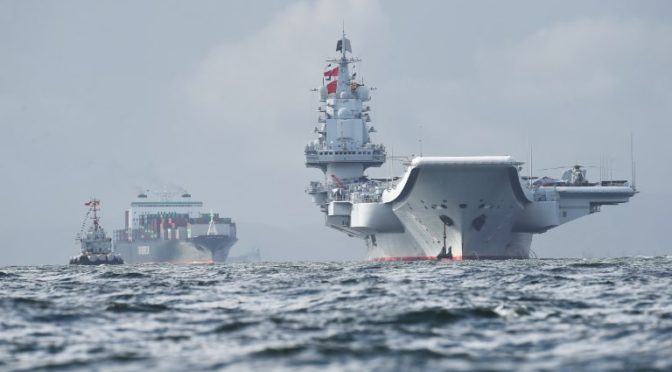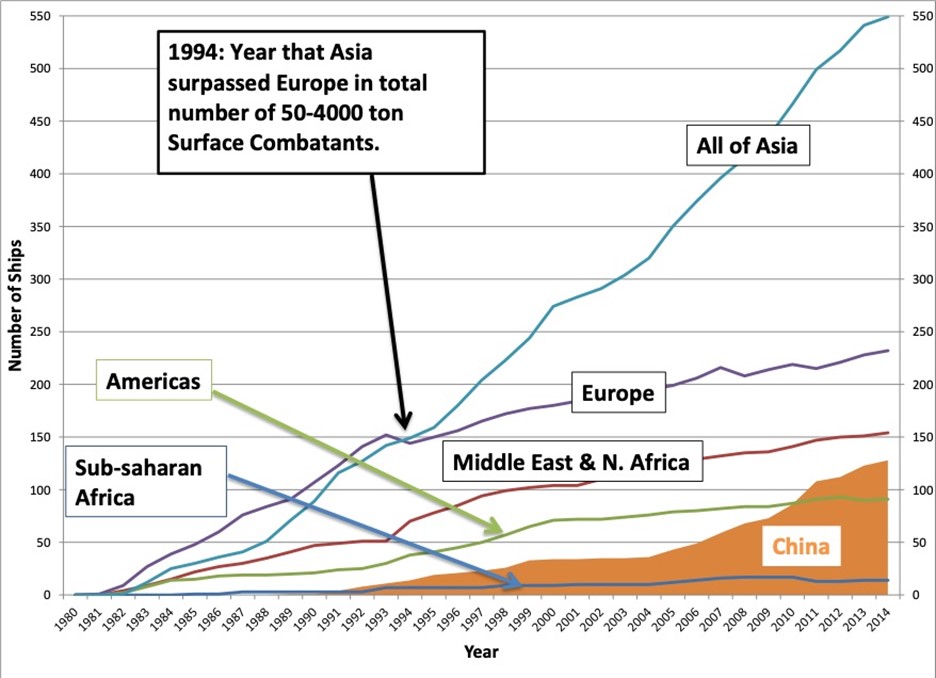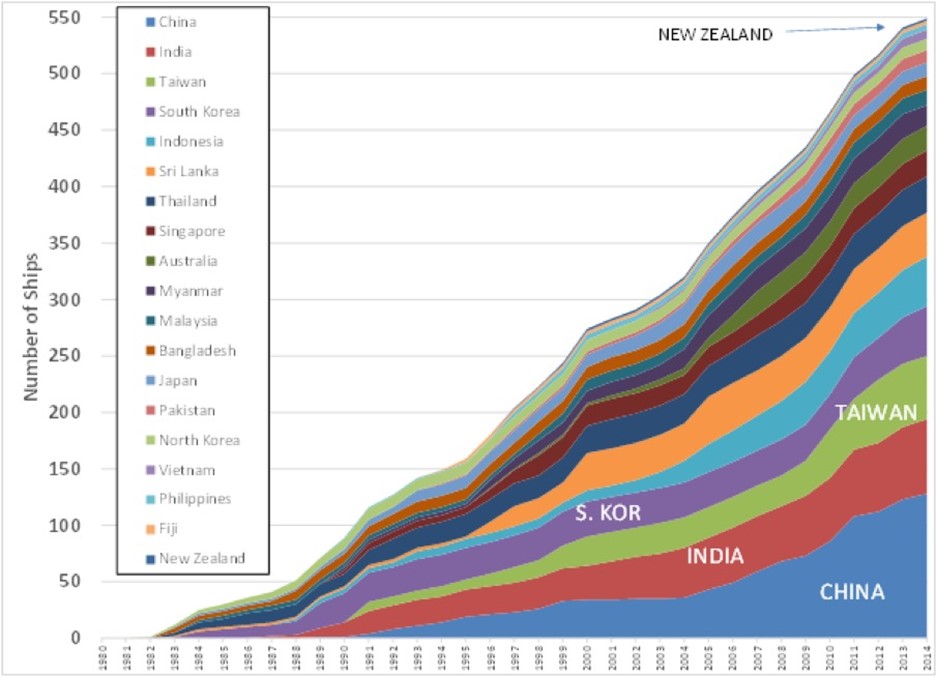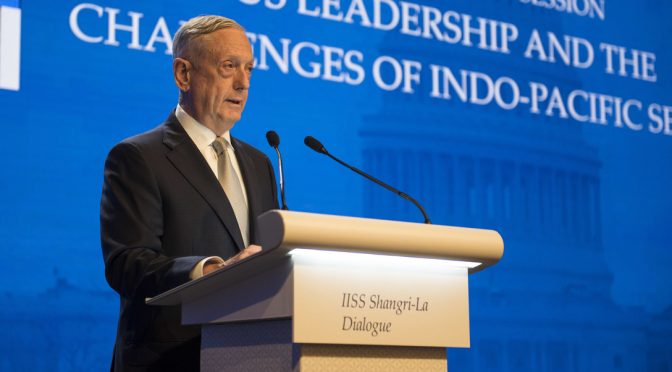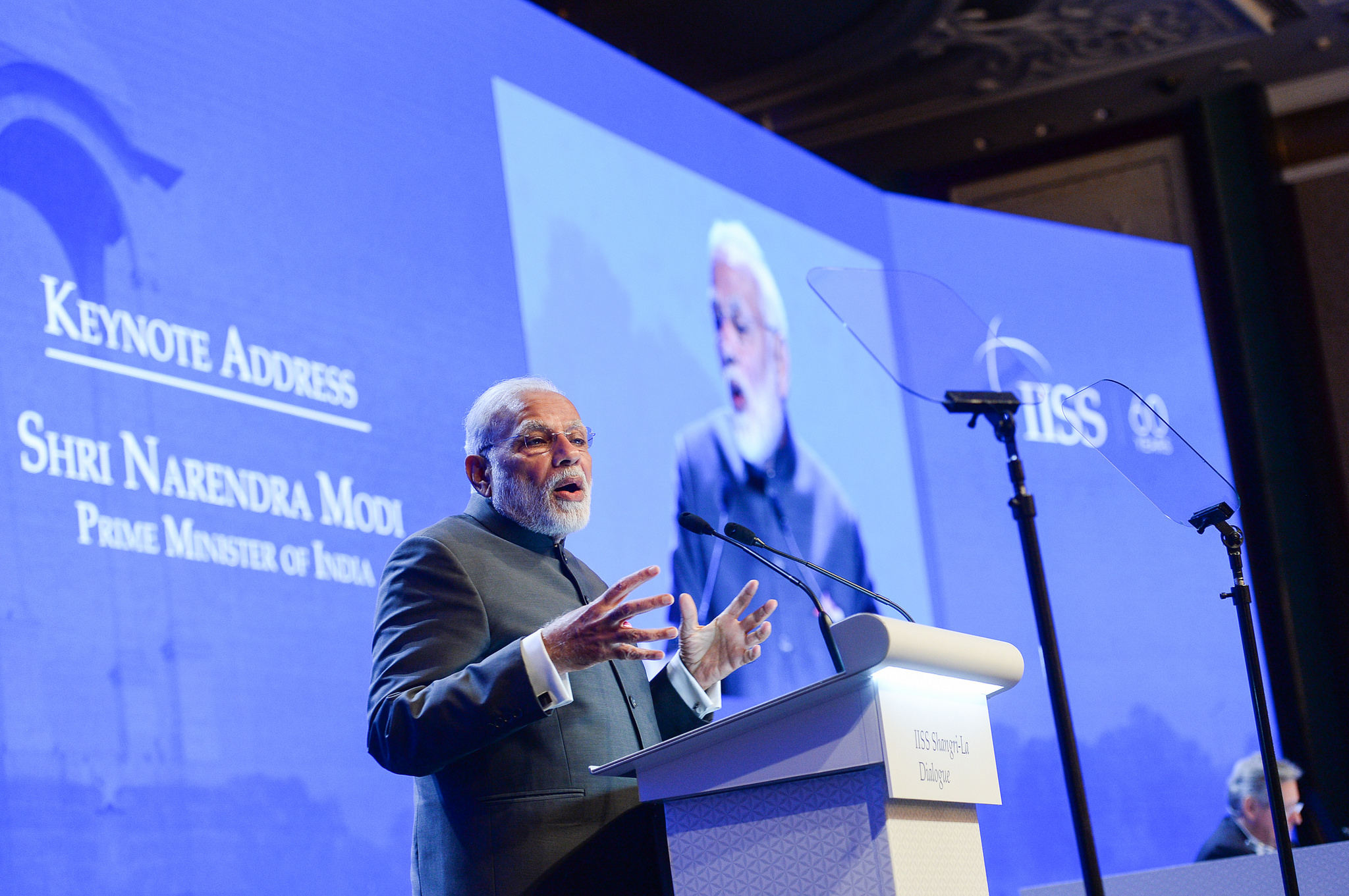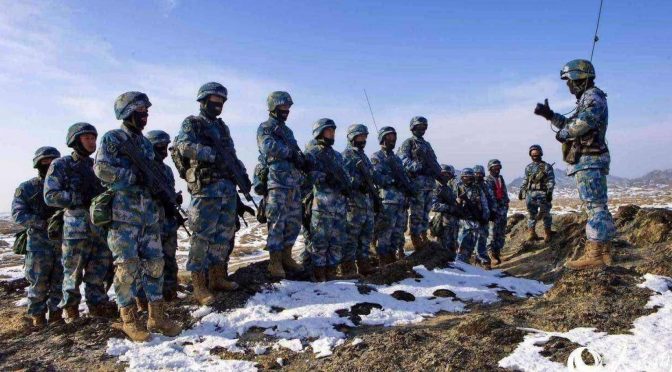By Bill Bray
The U.S. military spends quite a bit of money and time educating a segment of its personnel on foreign cultures. Too much or not nearly enough, depending on who you ask and at what moment you ask them. Recall the relatively short run of the Afghanistan/Pakistan Hands Program. As a colleague at the U.S. Naval Academy who is the director of the Center for Experiential Leadership Development program, which arranges for various cultural immersion programs for midshipmen, relayed to me recently, in the era of renewed great power competition the emphasis on “cultural education” is waning in favor of more traditional technical warfighting knowledge.
The Army and the Marine Corps will probably continue to prioritize foreign culture knowledge without much debate, for obvious reasons. The Navy, however, may not. This is a service that tried and failed to establish a several times in the past half century before finally succeeding in the late 2000s. The Navy’s FAO debate was emblematic of the service’s larger struggle with determining what learning to emphasize in addition to technical knowledge, if anything at all. At the start of my career in the mid-1980s, the prevailing consensus regarding Navy officer education, as I recall it, was that understanding foreign cultures is a luxury. Not bad to have, but not terribly important for the vast majority. We may be drifting back to that place, and that would be a mistake.
The right answer is that Navy officers need both technical and cultural knowledge to compete against a sophisticated adversary in both peace and war. China will be the dominant threat concern for new officers during their entire careers. Officers in particular should strive for much more than a superficial understanding of Chinese culture as it pertains to matters of politics and warfare.
Malraux and Eastern Thought
For those that have little or no background on Chinese culture, a book with which to start is one recommended to me long ago when working on a graduate degree in Asian studies—André Malraux’s slender epistolary The Temptation of the West (La Tentation de l’Occident), published in 1926 but remarkably durable in capturing the differences in Western and Chinese thought. Two characters, the young Frenchman A.D. and Chinese student Ling-W.-Y., correspond about art and culture, specifically about a decaying European culture and how it, in turn, has infected Chinese culture. This is a conversation that had been playing out in Malraux’s mind for some time, at least from the point he first came to “the Orient” in 1923 to search for (in actuality probably to pilfer for sale) ancient Khmerian sculptures along the Royal Road in Cambodia (an adventure that landed him a three-year prison sentence by French colonial authorities, subsequently suspended).
Born in 1901 into a seafaring family in Dunkirk, Malraux took an interest in art and archaeology at an early age. He studied at the Lycée Condorcet and later at the Ecole des Langues Orientales. He ventured to Cambodia with his young wife, Clara Goldschmidt. From his humiliating arrest in Cambodia, to his return to Indochina (Vietnam) in 1925 (after briefly having returned to France), and later political activities in China supporting both nationalist and communist movements, the facts of what exactly he did, with whom, and when are shrouded in myth, mystery, and conjecture—an opaqueness he did little to clear up later in life. What we can know for certain is that by the mid-1920s, while running a newspaper in Hanoi, Malraux was writing prolifically. He published his first full-length novel, The Conquerors, in 1928, followed by The Royal Way in 1930, and Man’s Fate in 1933, a story set against the failed 1927 communist uprising in Shanghai (written before Malraux ever set foot in Shanghai) that won the Goncourt prize.
That Malraux was at least a communist sympathizer into his 30s is without question. Yet even in the most fervent years of his left-wing political activities, Malraux was more interested in examining the human condition through art and culture than in political doctrines. In fact, according to early Malraux chronicler and late Harvard professor of French literature W. M. Frohock, Man’s Fate was viewed with some suspicion by orthodox communist hardliners. “Did Malraux have a party card? The legend holds that he did not. And on his trip to the 1934 Writers’ Congress in Moscow . . . he was billed on the program as a ‘Marxist humanist’ and, according to reports, placed his emphasis much more on the human than on Marx.” Malraux was always searching and never comfortable with the doctrinaire. His politics shifted continually over the course of his life. In the Second World War he served in the French Army and later the French Resistance, and after the war as Charles de Gaulle’s Minister of Information (1945–46) and France’s Minister of Cultural Affairs (1958–69).
Reading The Temptation of the West today, nearly 100 years after it appeared, reminds us of the hold culture retains on our thinking, even in an age of hyper-globalization. Malraux was deeply influenced by Friedrich Nietzsche’s philosophical critique of Western culture. In his introduction to the 1961 edition, Robert Hollander notes, “In Nietzsche, with his analysis of Western decadence, Malraux found an exalted precursor, more important for showing the way toward developing cultural generalizations than for shaping specific concepts.” Malraux also admired Pierre Choderlos de Laclos’s novel Dangerous Liaisons (1782), widely considered the best epistolary novel ever written in the French language. Nietzsche provided the philosophical foundation and de Laclos the form for Malraux to carry the critique further in the context of the West’s interaction with Chinese culture. The demise of a culture is not something one can truly appreciate from a distance. It is not an abstraction, of interest only to anthropologists and historians. It is personal and we must feel it—and we do through the letters of A.D. and Ling. We feel how they are inextricably caught in this crisis, how the uncertain future is their future.
One can forgive a young Malraux for so harshly dismissing a European culture he worked so hard in his later years to preserve. What could Europe but seem in the years immediately following the Great War? Europe was still convulsing, the old order still gasping, while vile political extremism was gaining currency. The center was never more than tenuous, and of course it collapsed like a house of sand by the end of the 1920s. In 1927 Malraux published the essay “D’une Jeunesse Europeenne” (“From a European Youth”) in Les Cahiers Verts in which he “proclaimed a personal alienation from European culture to match the one expressed by the focal character in La Tentation.”
An Enduring Epistolary
Only 18 letters comprise the book, and 12 are from Ling in Europe to A.D. in Asia. In the brief forward we learn A.D. is 25 years old and Ling 23. We never learn how Ling and A.D. know each other or why they correspond in the way they do. We are told at the end of the forward that the letters have been “selected and edited” and are intended to evoke in readers “some arresting thoughts on the seemingly unusual sensuous and spiritual lives of these two men.” Who selected and edited them? We have no idea. With this device Malraux seems to want us to know the bare minimum of background, as too much detail will unduly influence our interpretation and understanding of the subtle and finely wrought conversation.
The opening letter is from A.D., written from the liner Chambord as it carries him to China. We are not sure where Chambord is, only that A.D. has “seen savages suddenly appear and offer seafarers horn-shaped fruits from primitive trays. . .” He goes on to describe a wondrous flow of exotic sensations. Before leaving Europe, he experienced the rest of the world only through books and the gathered cultural treasures and animals one finds in museums and zoos. “Man, capturing living forms one by one and locking them up in books, has prepared the present condition of my mind.” A.D. is embarking on an adventure to a strange world. He is a colonial man—not the incurious or rapacious variant, but also not above indulging in the luxuries on offer. Asia is a place for the taking. The culture must be protected, not for its own sake, but rather because it is interesting to the Western man.
Ling is already in France, and he’s unimpressed. He writes his first letter from Marseilles. From the opening line we see that Ling has ventured to Europe with much suspicion—“Europe calls forth few beautiful ghosts, and I have come to her with hostile curiosity.” He is curious to know how Europe is so strong that it could colonize peoples around the world, including parts of China. China in the 1920s is sick, and Ling believes Europe the source of the disease. The remaining letters from Ling are sent from Paris, although he does make mention of visiting other European cities.
What transpires from the third letter onward is an inquiry into the European and Chinese minds—how each character thinks and sees the world. Religion, art, architecture, myth, literature, philosophy, even dreams—these are the methods of cultural expression Malraux examines. Ling studies and inquires, but also compares and explains. He is on a mission to understand how something he longs to preserve is slipping away. A.D. is less didactic. He is not determined to defend European culture. He is a product of it and all its excesses and tragedies, and that has convinced him that life is ultimately absurd. Searching for meaning is a fool’s errand. The existential concept “the absurd”—the realization that man’s attempt to understand and order the world is a fruitless exercise because no such order exists—is a Malraux motif. It is no wonder he influenced Sartre, Camus, and other French existentialists.
Malraux’s observations of both Chinese and European culture—East and West—rush at us in exquisite blossoms of language. When A.D. surfaces, such as in letters 8 and 12, he seems in implicit agreement with Ling on many points, as we see him explaining Europe rather than defending it. In letter 8, A.D. writes, “The excessive importance we have been led to give to ‘our’ reality is doubtless just one of the means the mind employs to defend itself … The absurd, the beautiful absurd, linked with us like the serpent to the tree of Good and Evil, is never completely hidden …” And in letter 12, “Europeans are weary of themselves, of their crumbling individualism, of their exaltation. What sustains them is less a thought than a delicate framework of negation.”
The denouement occurs in letter 17. Ling responds to A.D.’s description in the previous letter of his long discussion with the ex-politician Wang-Loh, whom he met in Shanghai. Wang-Loh pronounces the traditional culture of China dead. He pours scorn on young Chinese who have been infected with Western ideas. Ling is in sorrowful agreement with Wang-Loh, and the tone of the letter resonates a deep sadness. “He believes China is going to die. I believe it too.” For thousands of years, a propriety where elders are held in high esteem and revered for wisdom was being upended by a Western-educated youth—the “new elite.” But the new elite are not entirely happy to adopt European culture and shed their native culture. They believe they can have both. They are “tortured souls.” This is the tragedy unfolding in China. Ling sees it and is helpless to stop it. His countrymen thought they could absorb Europe like “learning a foreign language,” with no adverse repercussions to their own culture and identity. “How can I express the feelings of a disintegrating soul? All the letters I receive come from young men as desperate as Wang-Loh or myself, barren of their own culture, disgusted with yours…”
In a preface to the 1992 University of Chicago edition, noted China historian Jonathan D. Spence wrote, “It is never safe, and often folly, to call any writing ‘prophetic,’ but the closing two pages of this last letter of Ling’s read now as if they had been designed as an epilogue and benediction to the hopes and fears of China’s long revolution, and to the millions who died for the future…” What to make of The Temptation of the West today, nearly 30 years after Spence wrote those words? Like Malraux himself, the book refuses to be neatly distilled. It is heartbreaking to read about a culture dying, but we do not get the sense that it was ever avoidable. It seems a fate, a destiny, and not the result of a chosen direction that existed aside other paths just as easily taken. Ling comes closer to A.D. in concluding that all human existence lies in the “metallic realms of the absurd.” What awaits them both is only a “naked horizon and the mirror of solitude’s old master, despair.”
Culture Still Matters
When I first read this book in the early 1990s, a debate was raging on what the world was becoming in the post-Cold War era. Francis Fukuyama had recently published the article “The End of History?” in The National Interest. With the fall of the Berlin Wall, and before the Soviet Union formally dissolved, Fukuyama resurfaced an argument first coherently offered by the German philosopher George Friedrich Wilhelm Hegel in the early 1800s that history—meaning the trajectory of man as a political and social creature, and not the academic subject—is not haphazard, but rather evolves with purpose and will have an end. The purpose, according to Hegel, is man’s quest for freedom and the end is a political system that fulfills this quest in all its citizens. In the 1930s, the Russian-French philosopher Alexander Kojeve gave a series of lectures incorporating Hegel’s concepts into 20th-century European democratic political theory. Fukuyama essentially reargued Kojeve’s thesis (and openly credited Kojeve) in his subsequent book, The End of History and the Last Man, published in 1992.
Fukuyama has since had a legion of critics, some who I am convinced still misunderstand his argument, but also some very learned and distinguished. In his 1993 book, Specters of Marx, Jacques Derrida dismissed Fukuyama’s book as “Western triumphalism and Christian eschatology.” For the American defense establishment, however, the Fukuyama critic more widely and warmly read was Samuel Huntington, whose essay “The Clash of Civilizations” appeared in Foreign Affairs in 1993. For Huntingdon, the end of the Cold War signaled not the affirmation of a political ideology, but the loss of a transcendent ideology’s hold on the more ancient and deeply held drivers of human conflict. At least one lid had come off a boiling pot. Both communism and liberal democracy always struggled to tame the forces of cultural identity in the service of universal principles, and now that at least one of the ideologies proved a failure, vast swaths of humanity will more likely find purchase in their civilizational identity than in the principles of liberal democracy. Huntingdon predicted a new wave of conflict in the 21st century, the fault lines of which will be between ancient civilizations.
It has been more than a quarter century since the ideas of Fukuyama and Huntingdon captivated so many of us, and in that time plenty of evidence has surfaced to support both viewpoints. Fukuyama has since revisited and moderated his position to account for group identity as a more potent political force than he had anticipated. But what is hard, if not impossible, to deny is that culture still matters. Listen carefully, for example, to the speeches of Chinese President Xi Jinping. He regularly appeals to Chinese culture to help justify the party’s legitimacy. The Hong Kong Chinese in the streets defending the city’s democratic structures are traitors not to the communist party, but to China—to being Chinese. At its core, Beijing’s great-power restoration project is much about the primacy of Chinese culture. Xi aims to restore what the fictional Wang-Loh thought was dead.
Given that reality, how much should young Navy officers educate themselves on Chinese culture? Quite a lot, in my view. China, with its highly capable, modernizing navy and its grand ambitions, is the great problem of their careers. The letters of Ling and A.D. add an interesting and different way to help do that.
Bill Bray is a retired Navy captain and deputy editor-in-chief of the U.S. Naval Institute’s Proceedings magazine.
Featured Image: French President Emmanuel Macron, left, and his Chinese counterpart Xi Jinping attend a wreath laying ceremony at the Arc de Triomphe monument in Paris, March 25, 2019. (AP Photo)


